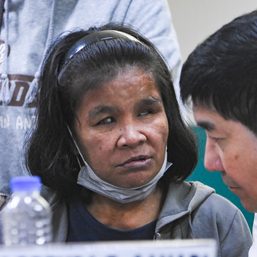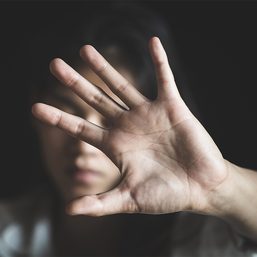SUMMARY
This is AI generated summarization, which may have errors. For context, always refer to the full article.
![[OPINION] Why women are worse off during the pandemic](https://www.rappler.com/tachyon/2020/11/ispeak-women-poverty-pandemic.jpg)
The year is 2020. Millions of women and girls are still living in poverty and suffering from hunger and malnutrition across the globe, and it’s only about to get worse during this health crisis.
Women have always been disproportionately disadvantaged in comparison with men. Women often comprise the poorest of the poor because they face systemic and cultural barriers that chain them to the household, greatly limiting their opportunities to climb out of poverty and live a life they have reason to value. From violence to discrimination, women face various societal disadvantages primarily because they are women. These experiences entrench women in a vicious and intergenerational cycle of poverty.
In other words, poverty is a gendered experience.
Over the past few decades, various development organizations have strived to address what Charlotte Wrigley-Asante calls the “feminization of poverty” (Wrigley-Asante, 2008) in a multitude of ways. The most striking approach was one that saw the empowerment of poor women as the answer to solving hunger and malnutrition in poor households.
Various studies have shown the indisputable role that women have played in the management of the nutrition of their family. Especially in the case of poor households, studies conducted during the 1980s highlight that “mothers typically spend their income on food and health care for children, which is in sharp contrast to men, who spend a higher proportion of their income for personal needs” (Bureau of International Information Programs United States Department of State, n.d).
This shows that when women are able to earn a living, they prioritize the nutritional and health care needs of their family. In essence, by giving women a path to climb out of poverty through financial support and livelihood opportunities, their children are subsequently able to eat better and become less susceptible to illness, because financial resources of mothers are funneled into the well-being of their family.
Even though there is still a lot of work that needs to be done, positive strategies like livelihood training, microfinance programs, conditional cash transfers, and social protection programs have led organizations like UNDP to develop projections where rates of poverty for women were expected to drop by 2.7% this year, an immense step forward for women and girls worldwide. However, recent data shows an increase of 9.1% in poverty among women because of this health crisis (UN Women, 2020).
This may not be too surprising, with various businesses and establishments closing down due to quarantine policies, and companies having employees laid off. As a result, millions of women are left vulnerable, with limited sources of income to cater to the needs of their household – which can often place women in a position of complete reliance on social protection programs like the emergency subsidy program, the 4Ps or the Pantawid Pamilyang Pilipino Program, and other conditional cash transfers or feeding programs by the state.
When programs like these aren’t enough, desperation can force women to take extreme measures to feed their family, by “eating less or eating last, lowering their immunity to fight off diseases” (Patterson, 2020). And even within the 4 corners of their own home, women may not find themselves safe, with increased cases of gender-based violence and sexual exploitation in households where “men consider inadequate food preparation a justifiable reason to abuse their wives” (Patterson, 2020).
With no income to lean on, women are at risk of living in poverty, which also places their children in a precarious situation, increasing their vulnerability and propensity to suffer from malnutrition, hunger, and adverse health conditions in the long term.
What are states doing today? According to recent data, “46% of global policy responses on hunger and malnutrition in this health crisis do not refer to women and girls” (Janoch, 2020) and “…women are less likely to be covered by social protection measures” (UN Women, 2020). It appears that women are left completely out of the conversation in addressing hunger and malnutrition, but more so that states are not striving to keep women from falling into poverty in the first place, because of their lack of inclusion in social protection and welfare programs.
But what does it cost to invest in women and girls? According to Achim Steiner, UNDP administrator, “More than 100 million women and girls could be lifted out of poverty if governments implement a comprehensive strategy aimed at improving access to education and family planning, fair and equal wages, and expanding social transfers. Investing in reducing gender inequality is not only smart and affordable, but also an urgent choice that governments can make to reverse the impact of the pandemic on poverty reduction” (UN Women, 2020).
As it turns out, investing in women doesn’t take much. Recent studies show that it will take “0.14% of global GDP (USD 2 trillion) to lift the world out of extreme poverty by 2030; and USD 48 billion to close the gender poverty gap” (UN Women, 2020).
Apart from national and global responses, communities, grassroot organizations, and non-profits have banded together in this difficult time to generate and pioneer initiatives geared towards empowering women on the ground in addressing malnutrition and hunger by creating donation and food drives. In building solidarity in the midst of adversity, we see that the task of uplifting women and girls is one that can be achieved. One can only hope that we are not yet too late. – Rappler.com
Nicole A. Masagca is a junior Development Studies student at the Ateneo de Manila University.
Add a comment
How does this make you feel?


![[Time Trowel] Evolution and the sneakiness of COVID](https://www.rappler.com/tachyon/2024/02/tl-evolution-covid.jpg?resize=257%2C257&crop=455px%2C0px%2C1080px%2C1080px)




![[Free to Disagree] Arrest Quiboloy!](https://www.rappler.com/tachyon/2024/03/Free-to-disagree-arrest-quiboloy-March-11-2024-1.jpg?resize=257%2C257&crop_strategy=attention)

There are no comments yet. Add your comment to start the conversation.